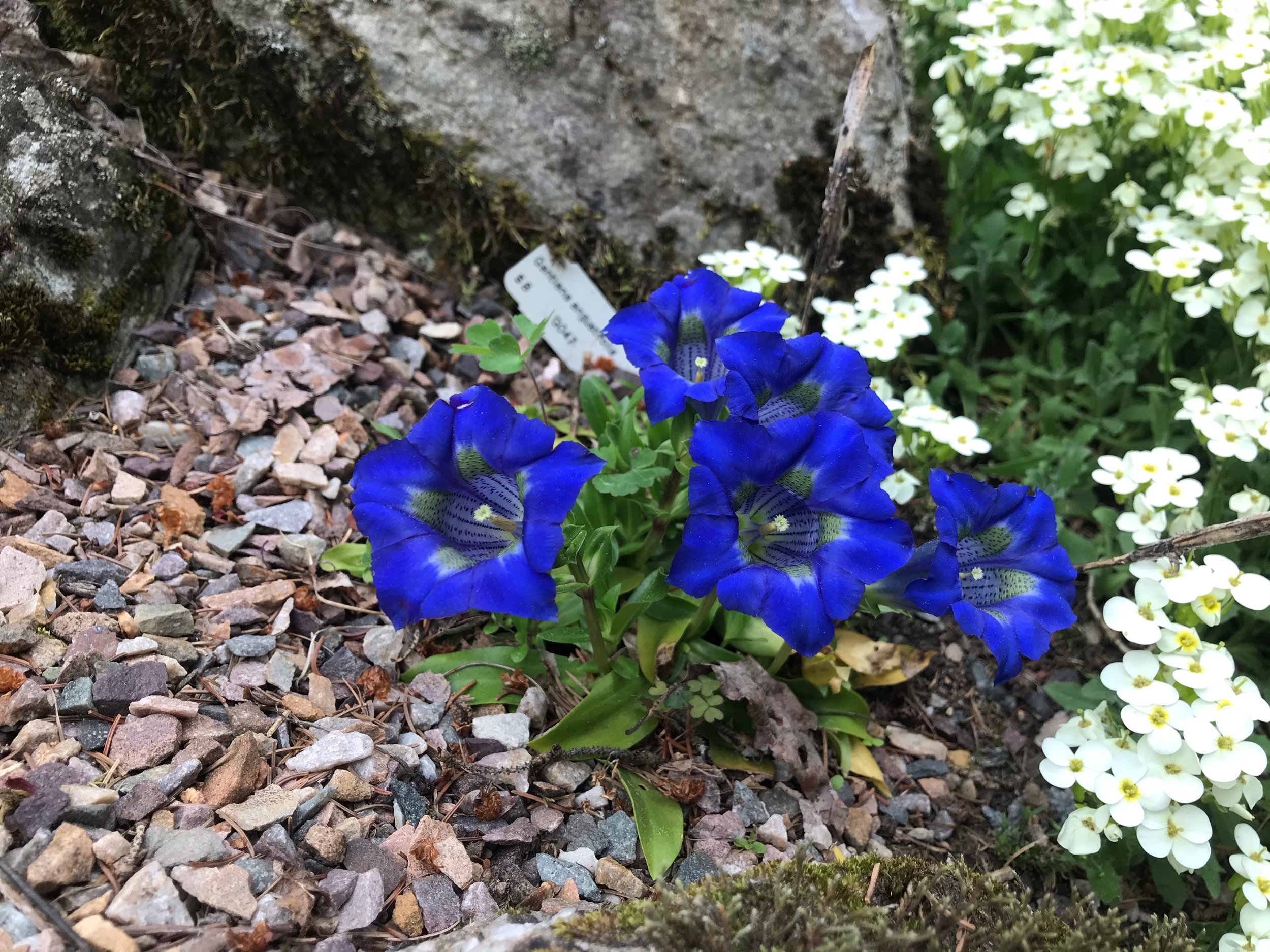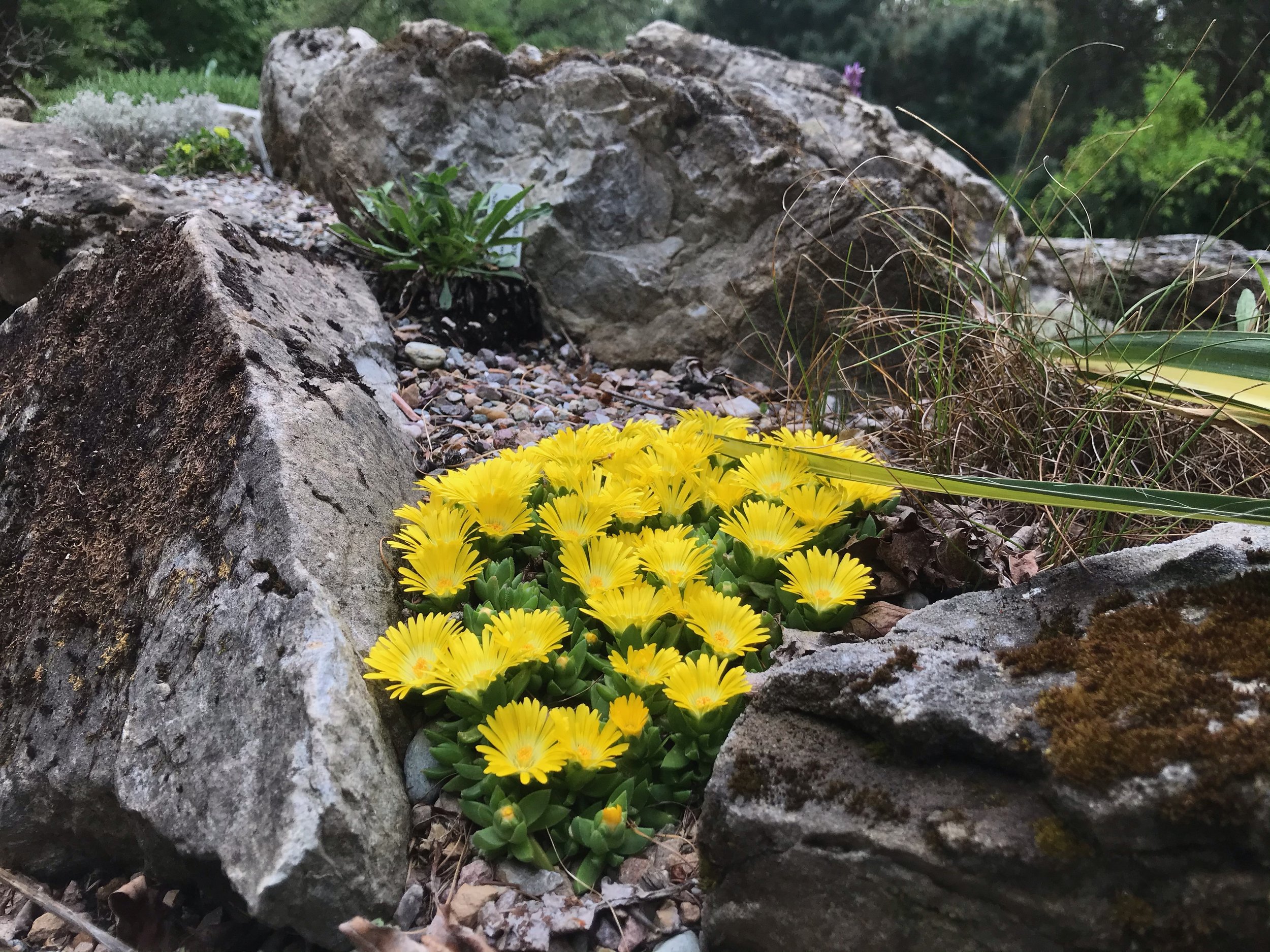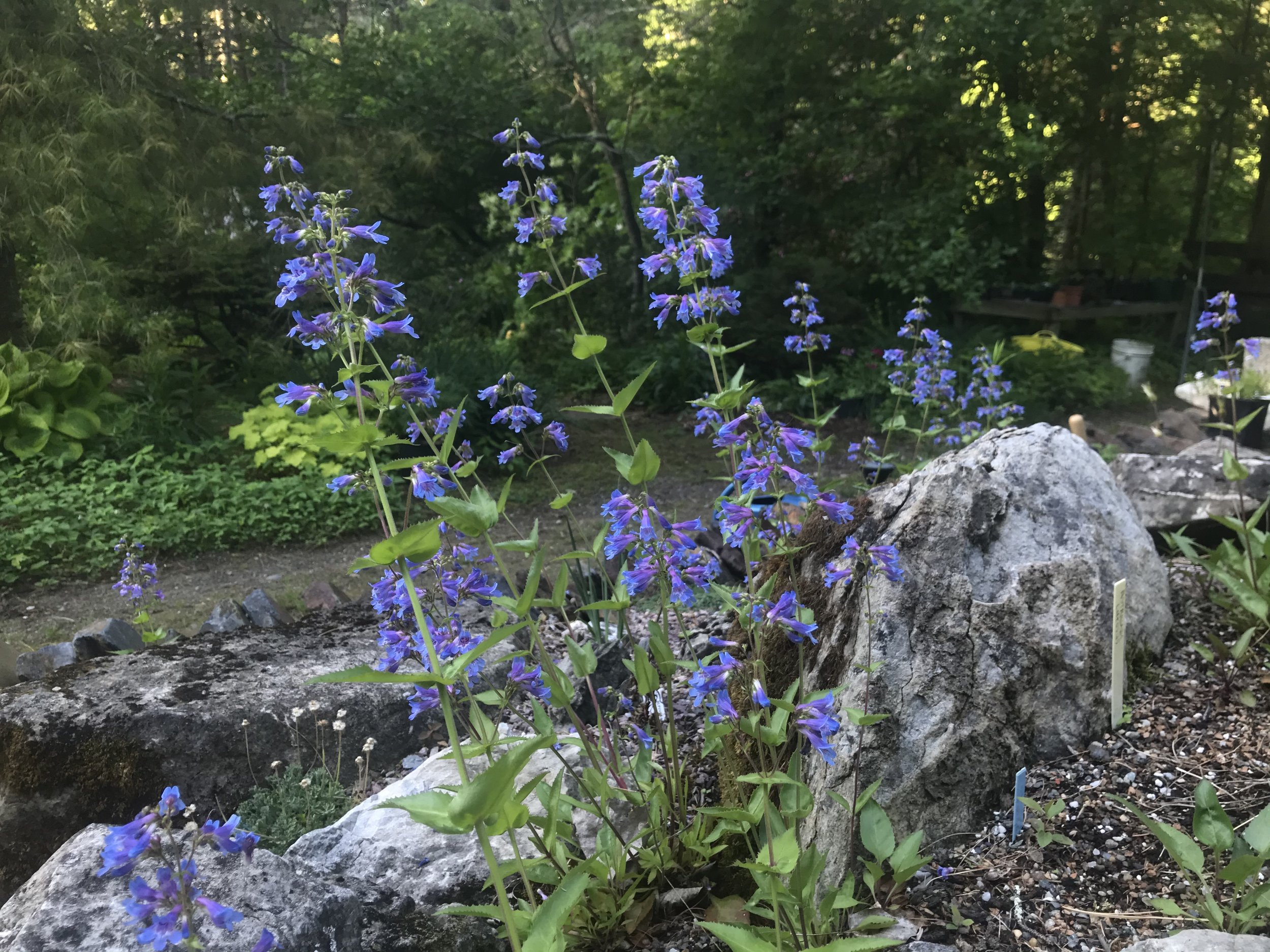As a life long admirer of plants found in any of the world’s high mountain alpine environments, I have always needed a place to try and cultivate a few of the vast number of plants found in these unique places. Anyone who has ventured above timberline in the Rockies, Alps or even our alpine areas in New England, can’t help to admire the charm these low growing beauties have to offer. Not all can be cultivated, but to even the odds of succeeding, one must make the effort to provide some of the conditions they need. First and foremost is excellent drainage. The “soil” in my alpine scree garden actually has no mineral soil at all, but rather a mixture of peat moss, sharp sand, perlite and expanded clay particles . The idea is to replicate growing conditions found on high alpine slopes. I try to provide at least a foot of this over a well drained base and then “mulch” the top layer with an inch or so of gravel to keep the crown of the plants dry, particularly important in the winter.
The Alpine Garden has slowly increased in size since the first section was constructed in 2011. A third addition was completed in the fall of 2022.

Aubrieta gracilis

Astragalus angustifolius

Heuchera sp. 'Canyon Lands'

Campanula cochliarifolia

Saxifraga paniculata

Ptilotrichum spinosum

Salvia caespitosum

Dianthus 'White Crown'

Delosperma sp.(Reznicek)

Gentiana angustifolia

Delosperma sp. (Reznicek)

Herringbone Stone wall with Campanula and Saxifraga

Penstemon hirsuta var. Pygmaeus

Iris variagatus "Hungarian Iris"

Penstemon virens ?

Penstemon virens?

Dryas x suendermanii A natural hybrid between the circumpolar D. drumondii x the northern North American D. octopetala

Iris taurica

Iris clausii

Penstemon sp. ex. Wilson, WY

Saponaria sp. and Campanula portenschlagiana

Saxifraga paniculata

Telesonix jamesii

Campanula portenschlagiana

Aubrieta gracilis with Arabis sturii below

Andosace sarmentosa var. chumbyi

Campanula carpatica - Carpathian Bluebells
